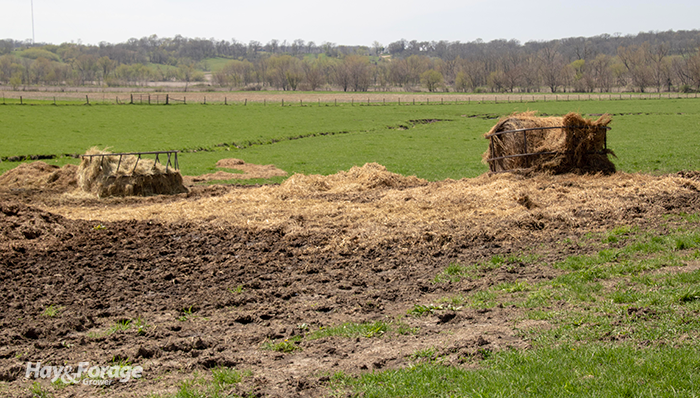
As the Super Bowl approaches, offensive and defensive coordinators will pour over film in an effort to either score points or prevent points, respectively. Truth be told, farmers should be doing the same year-round.
As a farm’s offensive coordinator, strategies are formed to gain production from either pastures or hayfields. This is typically where the glory lies, but the role of defensive coordinator on a farm is equally as important and often more impactful in the long term. It’s this position that carries the burden of preserving forage and eliminating waste once the production is put into storage and fed.
Lost harvested forage dry matter is the metaphorical equivalent of giving up points or, if you prefer, taking your points off the scoreboard. The result is the same at the end of the game.
Storing and feeding round bales has historically been an area where the range in dry matter loss has been astronomical, depending on the farm. Part of that loss comes from storage practices, but the other component is the feeding method.
In a recent Cow-Calf Corner newsletter from Oklahoma State University (OSU), Brian Pugh put some numbers to various options for feeding round bales. “Hay feeding losses occur primarily from trampling, refusal, and leaf shatter,” the extension agronomist explains. “Some feeding loss is inevitable, but it can vary from as little as 2% to more than 50%.”
Pugh cites an Arkansas study that found feeding round bales in an open-bottomed hay ring reduced the amount of hay fed by 29 percentage units when compared to feeding round bales with no barrier (13% loss versus 42% loss).
“If a 1,200-pound round bale costs $35, a 29 percentage unit reduction in hay loss is equivalent to a $10.15 savings per bale,” Pugh estimates. “The hay savings from using a ring on 20 bales would pay for a round bale feeder costing $200.”
A more recent study by OSU researchers compared the effectiveness of four different types of hay ring feeders. They reported dry matter losses for the different ring feeders as: poly rings with no lower guard (21%), open-bottom steel rings (20.5%), sheeted rings (12.6%), and modified cone feeders (5.3%).
“This data indicates that switching from an open-bottom ring to a modified cone feeder would result in a 15.2 percentage unit reduction in dry matter loss,” Pugh notes. “With the same $35 per bale hay, that equates to a savings of $5.32 per bale.”
Cone feeders range in style and costs, but Pugh says a popular model retails for about $565. “This indicates that after feeding 107 bales through the cone feeder, it would pay for itself in hay savings,” he adds.
Comparing the OSU modified cone-feeder data to the Arkansas data from using no ring feeder, Pugh notes that a farmer could potentially realize a 36.7 percentage unit reduction in dry matter loss by utilizing a feeder, translating to a savings of $12.85 per bale valued at $35 per bale. He calculates that the decision to purchase a proven and efficient hay feeder design would only require 44 bales of fed hay to pay for the purchase.
“Round-bale feeders are a wise investment when free-choice hay feeding is necessary,” Pugh concludes.

